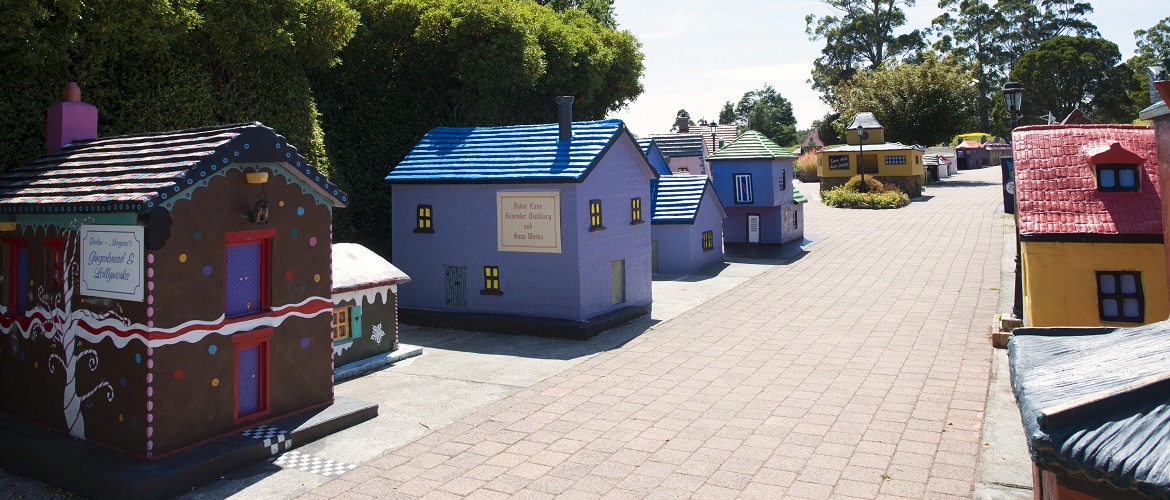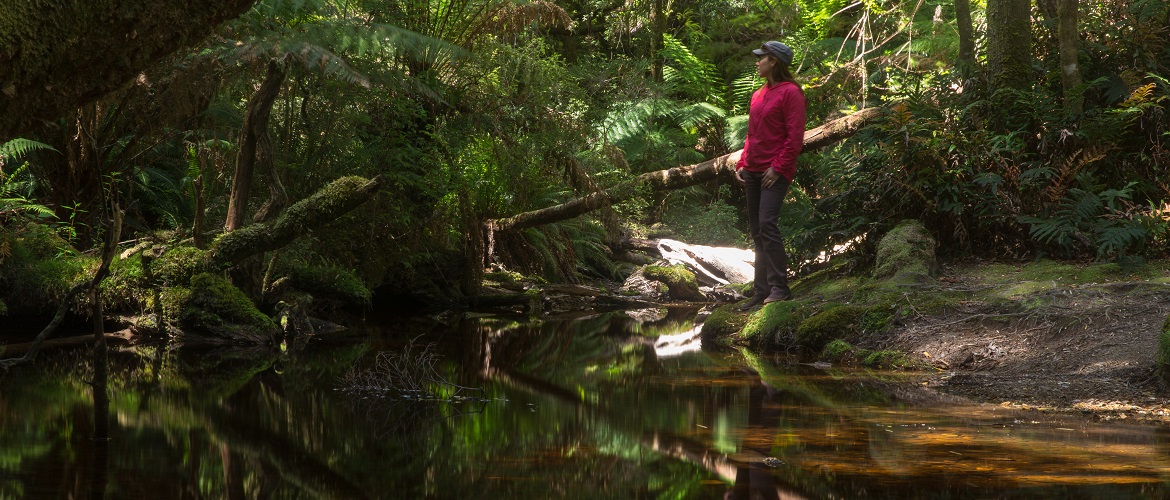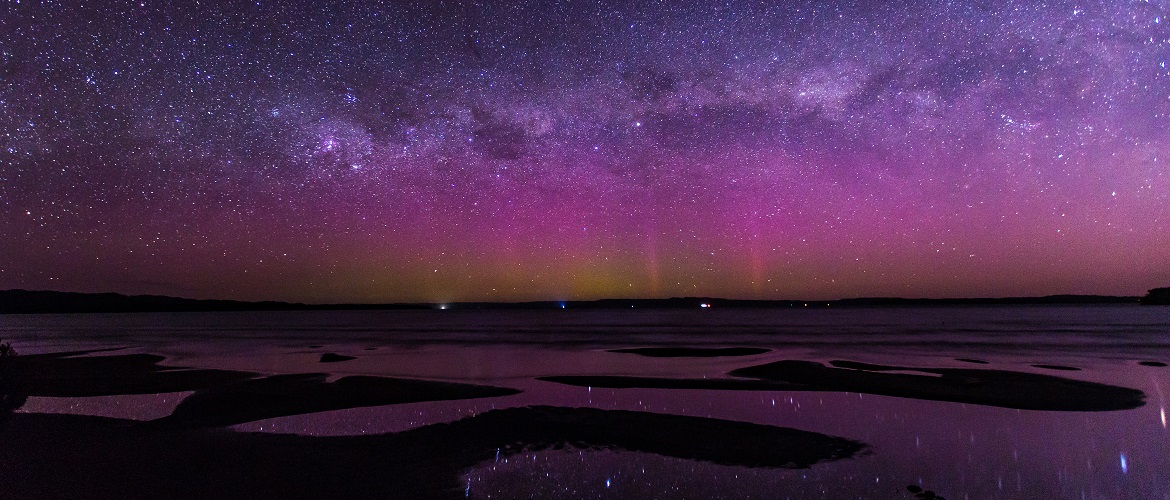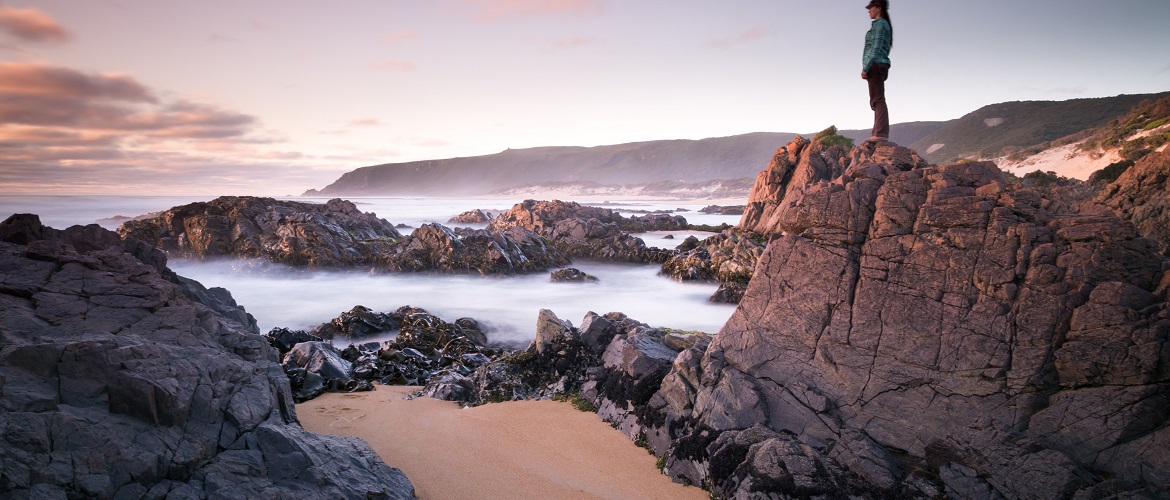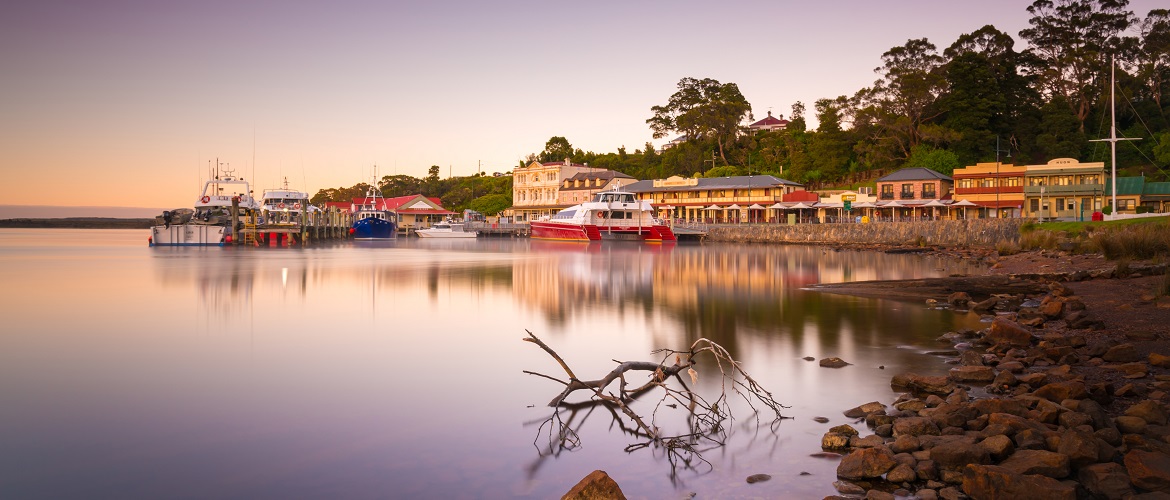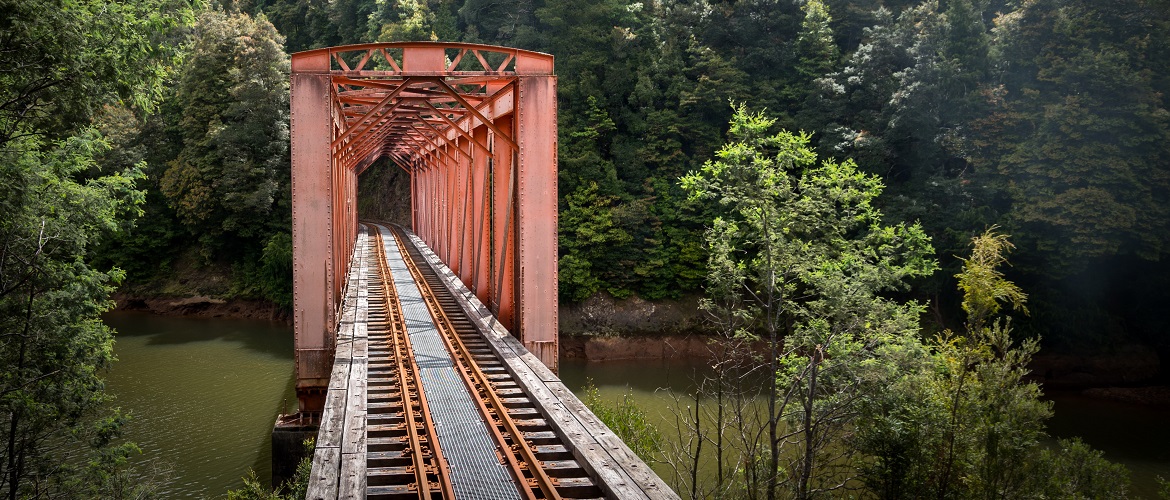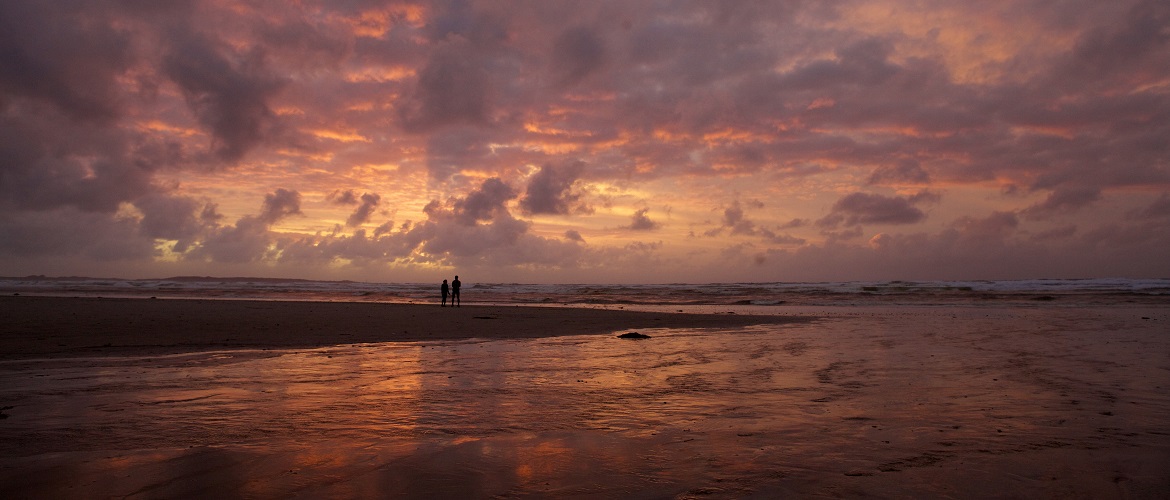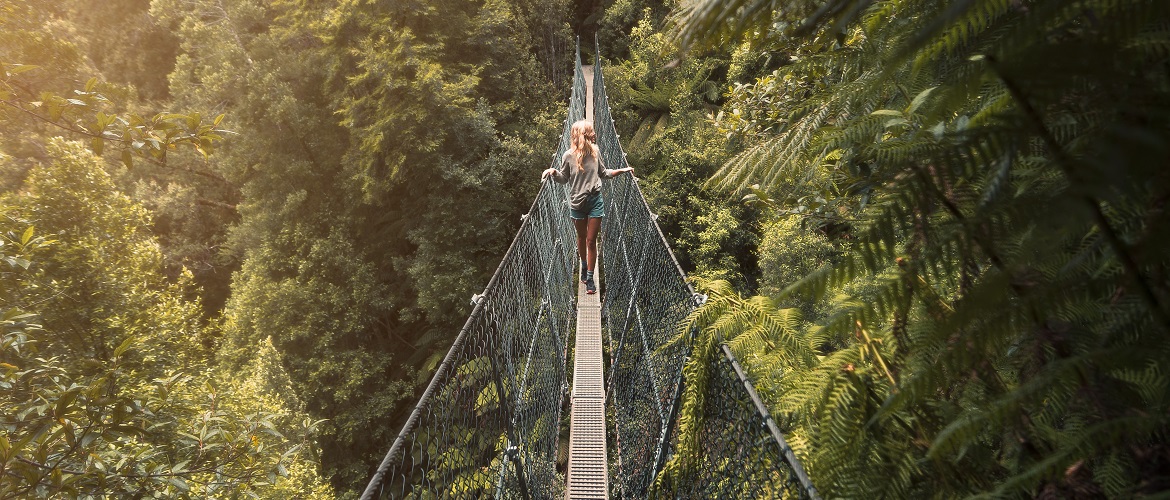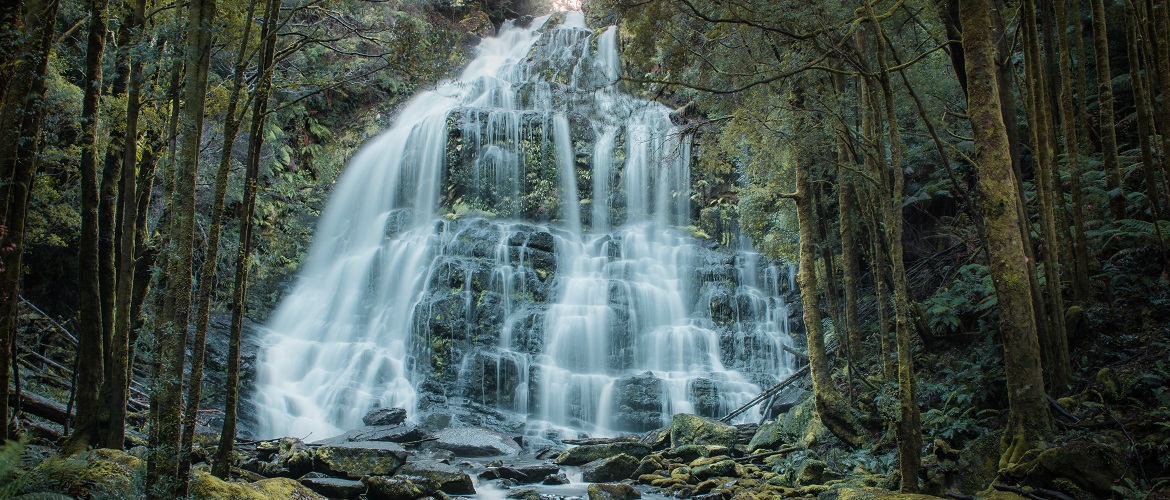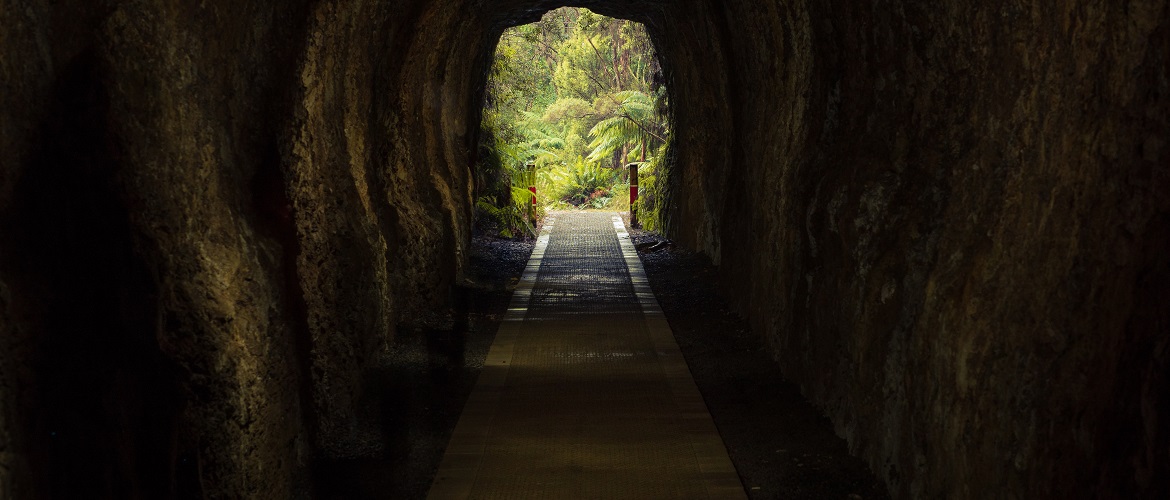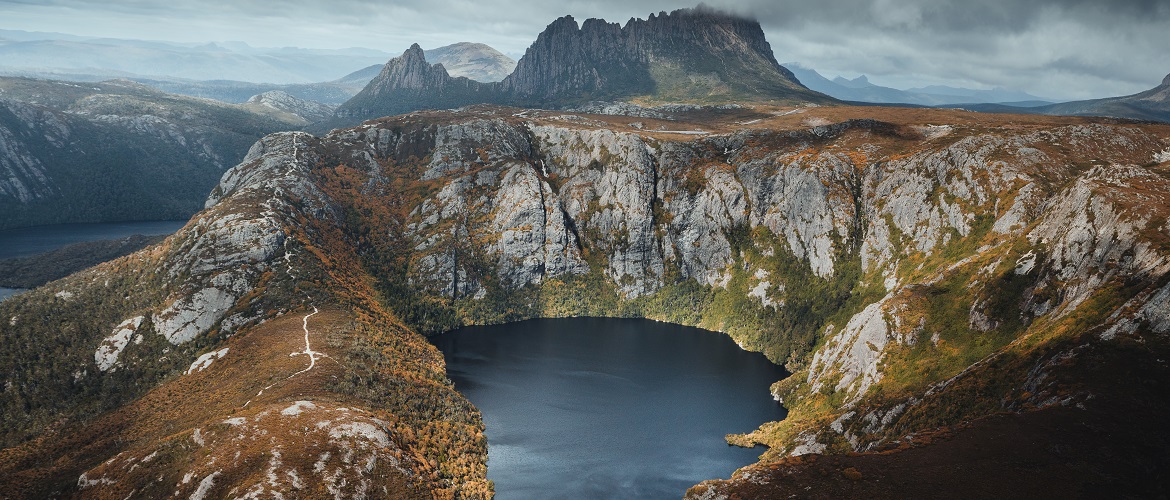This is a comprehensive guide to the West Coast and Rivers Run region in Tasmania. Here you will discover the many things to see and do in the region. Remember also that you can combine this itinerary with our other regional guides to create an in-depth itinerary for your ideal holiday.
Tasmania’s west coast region is a unique and pristine World Heritage area known for its abundant fishing and fascinating convict history. The rugged, untouched wilderness draws tourists and locals alike to this isolated part of the world.
In the heart of the west coast is the portside town of Strahan. The town has a number of boutique shops and cafés along the main strip. Visit the Cove Gallery, the Wilderness Woodworks and the Strahan Woodworks for displays of Tasmanian arts and crafts. Try a round at Strahan’s nine-hole golf course, or take a walk out to Hogarth Falls, an easy 50 minute walk, and the Teepookana Plateau for a brilliant view of the huon pines. The West Coast Wilderness Railway is popular, as are the cruises up the Gordon River. From the Gordon River Cruise and the World Heritage Cruise, explore the wonder of the area by boat, visiting the mysterious Macquarie Harbour and Sarah Island, both infamous for their harsh convict past. Wild River Jets give a thrilling 50 minute jet ride from Strahan to the incredible King River. Try the West Coast Yacht Charters for a yacht or kayak through the Gordon River, giving you a chance to see huon pines and glow worms or try your hand at trout fishing. Strahan Adventure Flights offer scenic flights over the Franklin and Gordon Rivers. Just outside of Strahan, visit the beautiful Ocean Beach or the Henty Dunes. For entertainment, catch ‘The Ship That Never Was’ for a great live performance about convicts sent to Macquarie Harbour, performed every day at 5:30pm. In the evening try a Bonnet Island Penguin Tour to see the penguins up close in their natural habitat on Bonnet Island, a small island at the mouth of Macquarie Harbour.
Queenstown, 40 minutes inland from Strahan on the B24, is the west coast’s largest town and is known for its unique landscape, transformed by the mining and logging of the past. Once the world’s richest mining town, Queenstown is now a modest and resilient township that houses the Evans Old Corner Store, which the same family have been operating since the 1800’s. The famous Gravel Football Ground, Bradshaw’s Sawmill and the Miners Siding displays are well worth a look. Take a tour with Mt Lyell Mine Tours to visit a working underground mine and visit the ‘Iron’s Blow’ (between Queenstown and Gormanston) for a spectacular view of the old copper mine. From the summit of Mt Owen, view the wonderful Lake Burbury and surrounding area. For views of Queenstown itself, travel up to the Spion Kopf Lookout. Visit the nearby towns of Gormanston and Linda for great historic examples of west coast mining towns.
Forty minutes north of Strahan on the B27 and 30 minutes north of Queenstown on the A1 is Zeehan, a rich example of Tasmania’s mining history and once the state’s third largest town. The Gaity Theatre once hosted Australia’s first opera singer Dame Nellie Melba. Today, you can take one of the many historic walks around the town, visit Zeehan’s original port at Trial Harbour or climb Mt Zeehan for views of the town. The West Coast Pioneers Museum is popular for its rich display on the regions mining heritage. The nearby Lake Pieman provides an excellent day of trout fishing and Granville Harbour is great for crayfish.
From Zeehan travel north to Corinna or north east to Rosebery. Corinna, an hour and 20 minutes north of Zeehan on the C249, is an old mining town transformed into a secluded settlement at the edge of the Tarkine Wilderness. The Tarkine Wilderness is also where you will find the Tarkine Forest Adventures that includes forest \ walks and an adventure slide. Rosebery is 20 minutes north east of Zeehan and is a mining town that has yielded copper, gold, silver and zinc in its time. Between Zeehan and Rosebery is the spectacular Montezuma Falls, an easy walk and well worth the visit. Horseback riding tours depart from Tullah, a town close to Rosebery. In the area is the Anthony Power Station Development, one of the state’s newest, and the Wee Georgie Wood historic steam train that operated from Tullah.
Further inland on highway A10 to the south, you will find the Rivers Run touring route, which encompasses the region from Lake St Clair in the heart of Tasmania, to New Norfolk in the south.
Lake St Clair is just 10 minutes’ drive from Derwent Bridge and just over an hour’s drive from Queenstown. It lies at the south end of the Cradle Mountain and Lake St Clair National Park and is part of Tasmania’s World Heritage Area. Lake St Clair is Australia’s deepest lake, and forms the beginning of the Derwent River. This beautiful area is surrounded by protected forests with the beauty of snow-capped peaks. There are a variety of walks in the area, ranging from a leisurely stroll, through to the extreme six night Overland Track. At Lake St Clair, also enjoy trout fishing, a Lake St Clair cruise and stunning views of mountain, lake and forest.
Derwent Bridge is a small town in Tasmania’s Central Highlands and is the halfway point between Strahan and Hobart on the A10. Being close to the state’s geographical centre, it is accessible from the north, south, east and west by road. Go trout fishing in the popular Derwent Estuary, or visit Greg Duncan’s Wall in the Wilderness for amazing woodcarvings depicting the history of the area.
Further south are the towns of Bronte Park and Tarraleah, both gateways to the Central Highland’s fishing and bushwalking. In Bronte Park, visit the historic single men’s huts for a great example of the harsh living conditions of the past.
Hamilton is the largest town in the south of the Rivers Run Tourist Route and, with its neighbours Ouse and Gretna, charms visitors with its pastoral landscapes and delightful country feel. The town’s stone cottages, homesteads, mills and service buildings all date back to the 1800’s, with St Mary’s Church (c1848) having headstones dating back to the early settlement.

